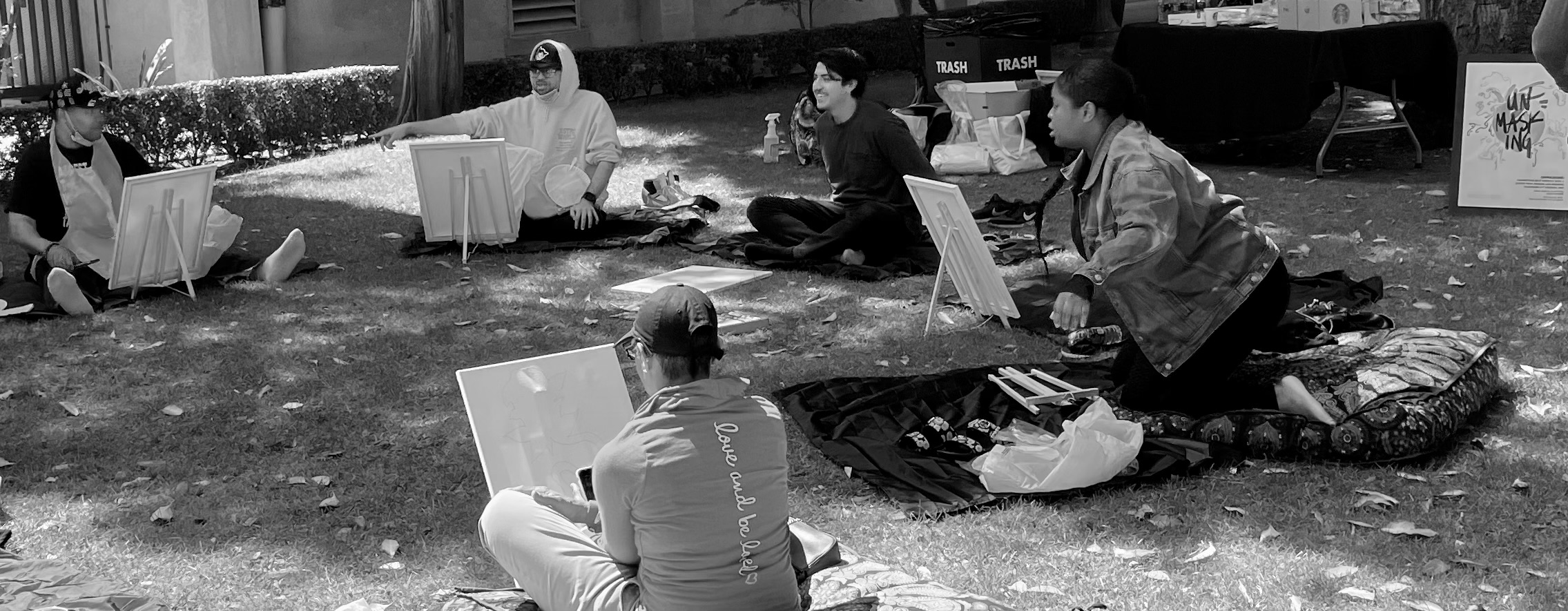2025 Arts in Action Awarded Projects
We are excited to announce seven Arts in Action projects for Spring 2025. In collaboration with local organizations in Los Angeles, these new and recurring initiatives will address shared challenges, strengthen communities, provide valuable learning experiences for students, and build lasting partnerships that benefit both campus and community members through creative problem-solving and civic engagement.
More than ever, art in the community serves as a powerful resource—connecting us when we feel alone, nurturing our collective wellbeing, and empowering us to support one another as we dare to create positive change in our communities.
BUILDING COMMUNITY AROUND A SHARED CANCER JOURNEY: A NARRATIVE MEDICINE APPROACH fosters the physical and mental health, resilience, and survivorship of those affected by cancer through narrative medicine writing workshops for Cancer Support Community Los Angeles (CSCLA) patients and USC students, staff, and faculty. Through art and creative writing exercises, participants will build community around shared experiences, culminating in collaborative poems and reflections to be shared with the broader CSCLA community.
CALLE A CALLE is a collaboration of USC Dornsife and USC Thornton School of Music students with community partners South LA Cafe and A Place Called Home to teach Corridos Tumbados—a popular Mexican regional music genre—to South Central youth. The program provides free guitars, professional instruction, songwriting workshops, and mentorship, leading up to performances and professional recordings of the students’ original songs.
GAME DESIGN FOR CLIMATE JUSTICE entails USC Games and Radical Play Lab faculty and students co-teaching game design at Hawkins High School in South Central L.A. In the studio-based class for seniors, the high-schoolers will create analog and video games addressing environmental issues in their communities while envisioning positive futures.
IMMERSIVE LEGACY MEMORIALS FOR GYNECOLOGIC CANCER PATIENTS enters its second year, expanding collaboration between Keck School of Medicine of USC and USC School of Cinematic Arts students to create VR/AR media for patients at L.A. General Medical Center. Building on last year’s successful letter-writing and art workshops, the program will develop interactive media pieces for regular exhibitions at the clinic, culminating in an annual Celebration of Life event.
IMPROV TRAINING FOR COMMUNITY HEALTH WORKERS partners the USC School of Dramatic Arts’ Comedy Program with Children’s Hospital Los Angeles to train Community Health Workers in improv theater techniques. This collaboration aims to enhance essential skills such as active listening, advocacy, and well-being for the trusted, non-licensed professionals who bridge the gap between patients and health systems.
REMIXING BUNKER HILL’S REBEL ARCHIVE is a community memory project about the historic L.A. neighborhood and the impact of urban renewal and displacement. In the partnership between former residents, high schoolers, USC students, the Los Angeles Public Library’s Octavia Lab, the Los Angeles Conservancy, and the USC JumpStart program, participants will research archives, edit video interviews, and create narrative avatars for a digital model. Former residents will lead summer walking tours, preserving neighborhood history while envisioning community futures.
VISUALIZING COMMUNITY DATA FOR ACTION is a project led by the Los Angeles Community Action Network (LA CAN), USC faculty, and USC students to transform data from Skid Row into visual and performative art. Building on previous work documenting food and water access and women’s experiences of homelessness, this phase will create murals, sculptures, and community art that highlight the needs of unhoused residents and support advocacy efforts.



